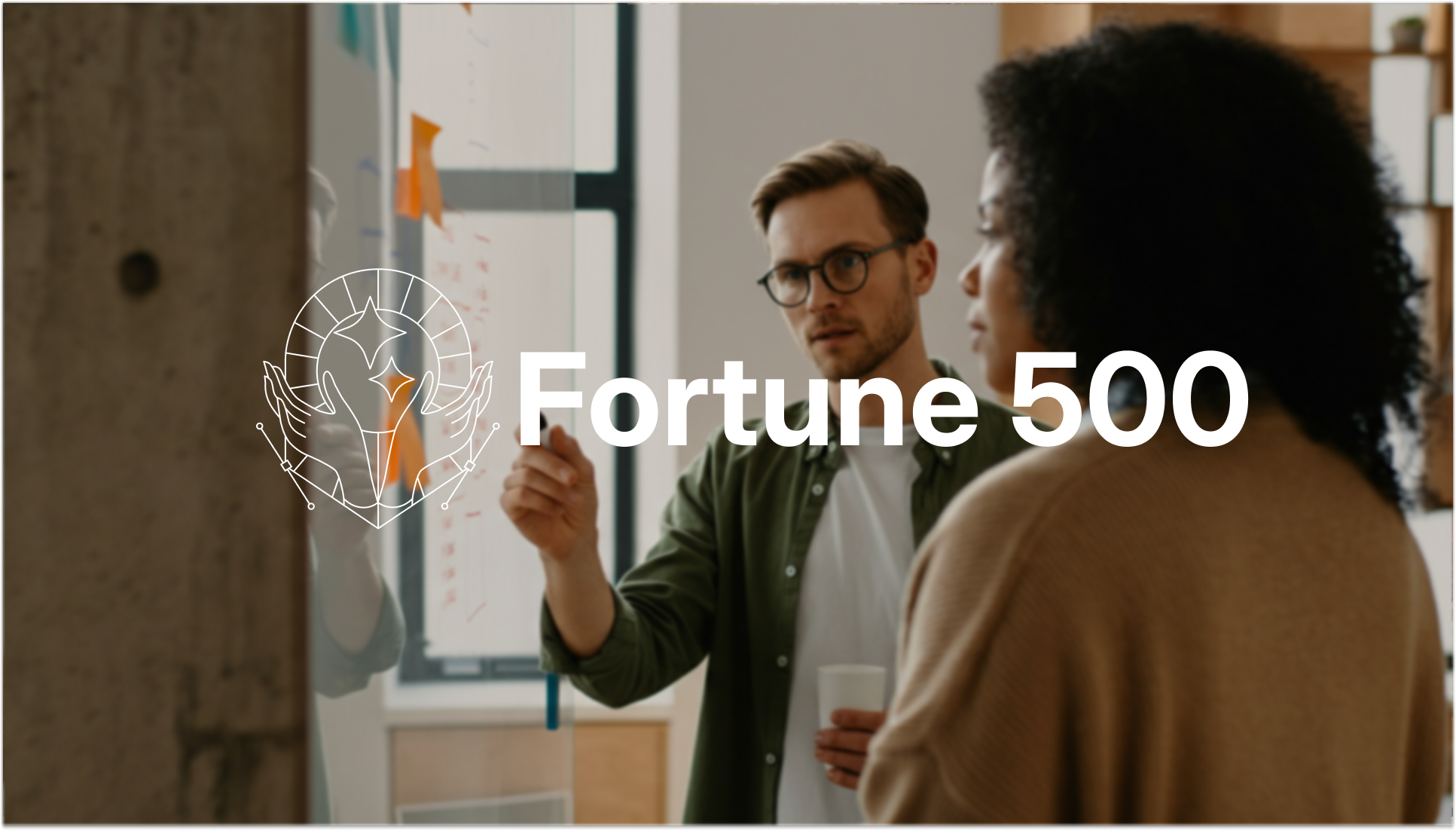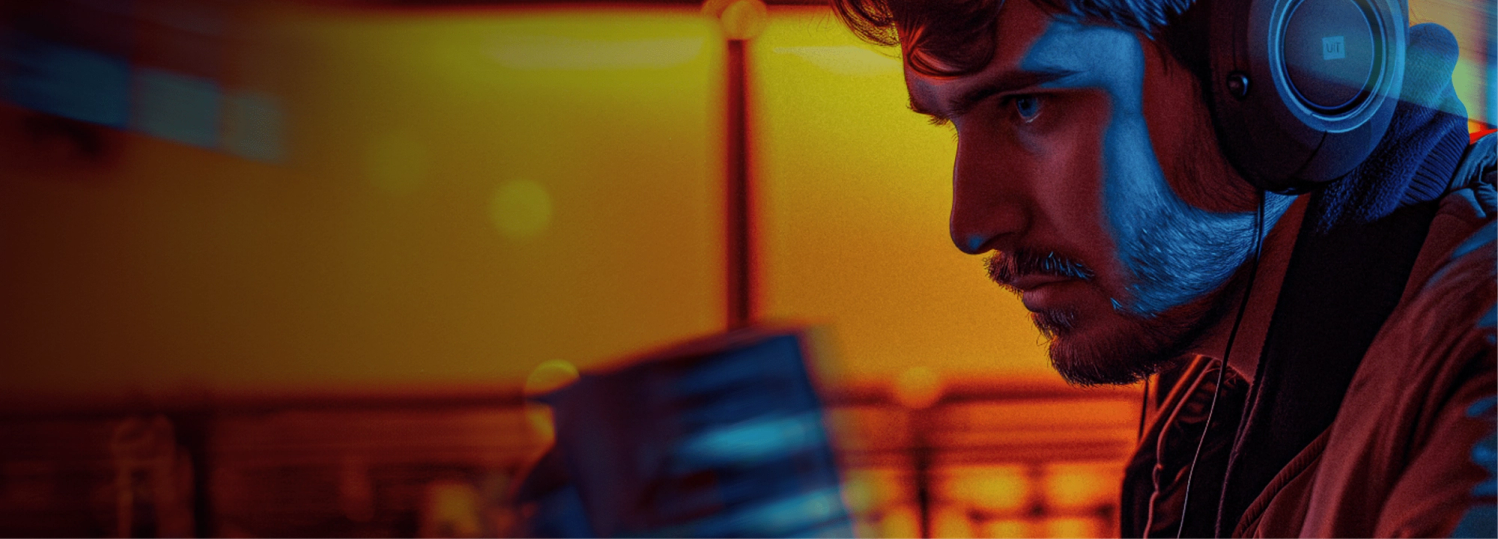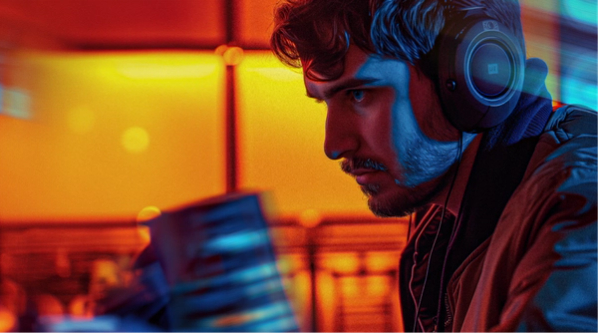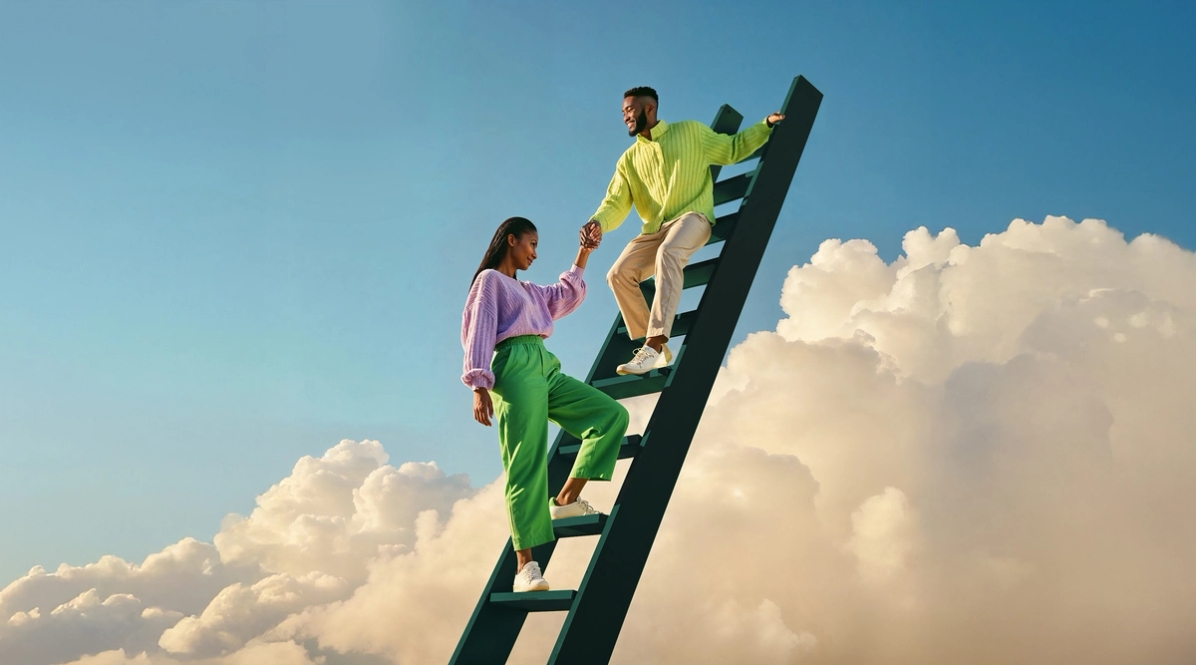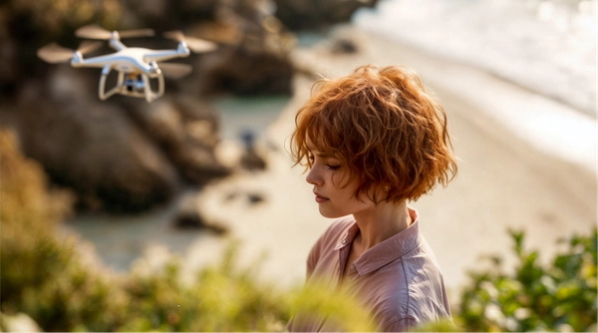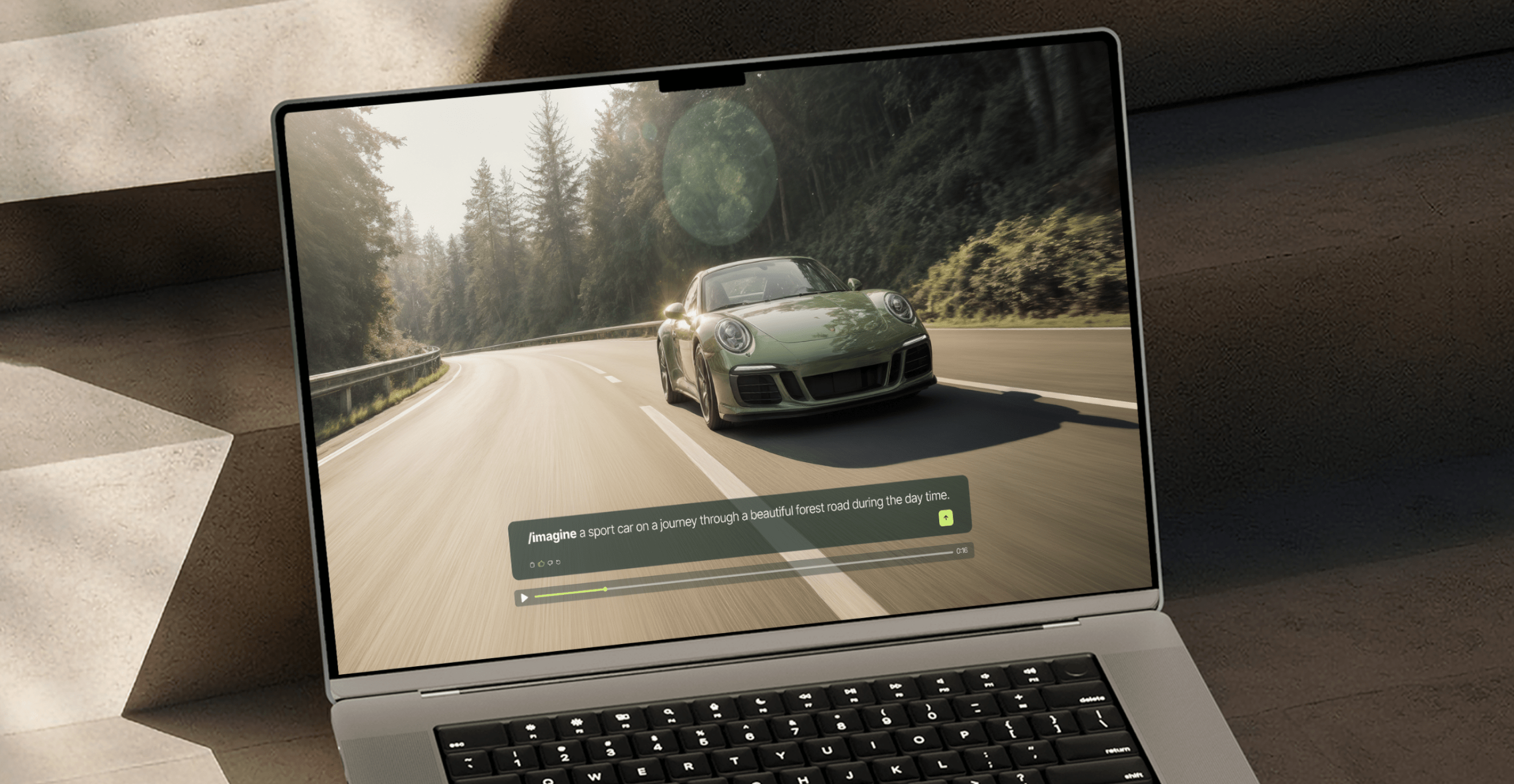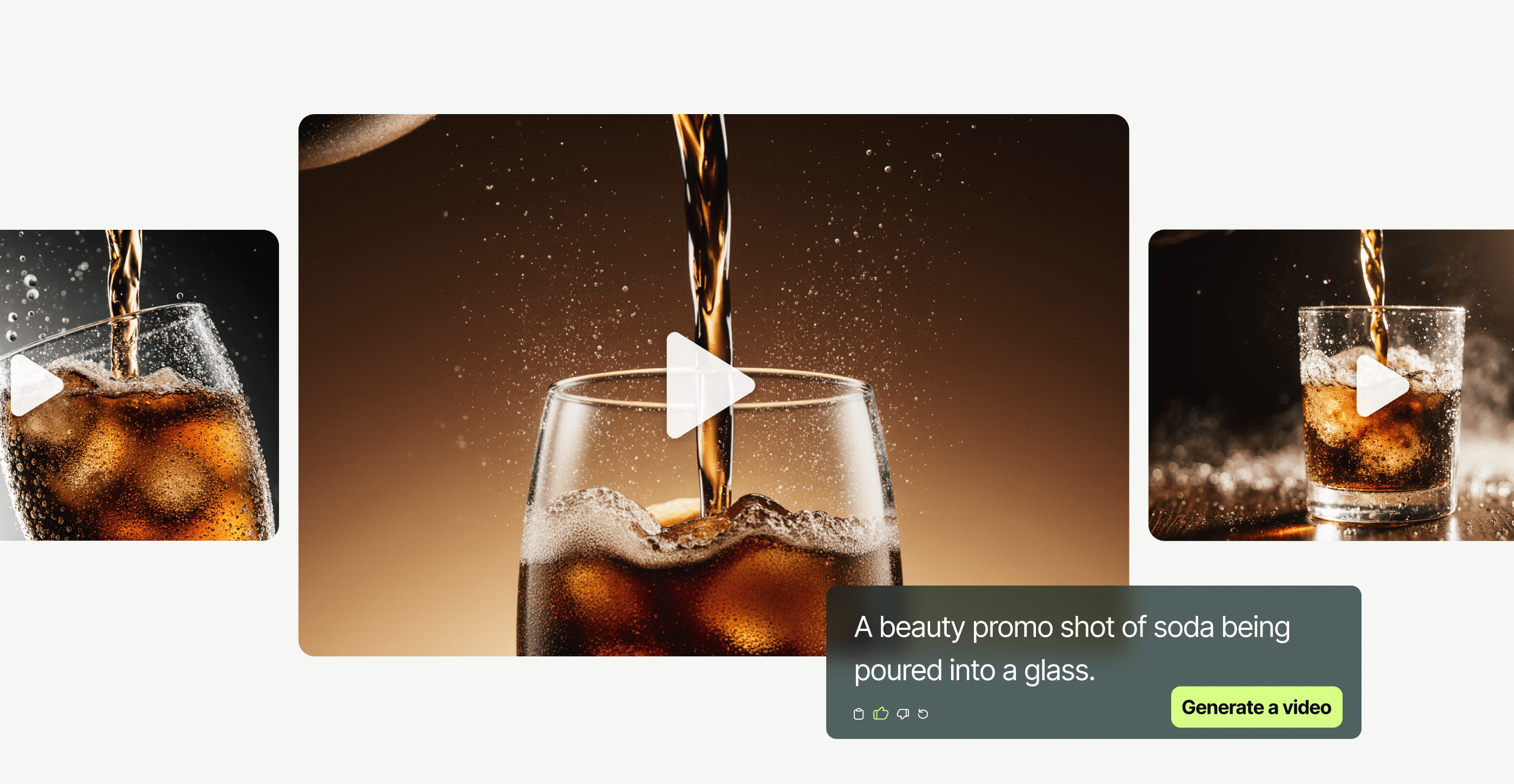
AI video tools have reached enterprise quality. Yet, many teams still don’t quite know how and where to fit AI into their video production workflows. This guide, packed with expert insights, covers the good, the bad and the how-to of hybrid human-AI video workflows to help you create top-quality videos fast.
The smartest brands no longer ask whether to use AI in video production. They pinpoint where it fits, what it accelerates and when it truly adds creative value.
This shift from “if” to “where” marks a fundamental change for enterprise creative teams. AI video tools have exploded in quality and accessibility. But while the tech barrier has been lowered, the strategic questions have become more complex.
Most enterprise marketing leaders find themselves caught between two extremes: The hype that promises AI will replace entire production teams, and the skepticism that dismisses the tech as expensive experimentation. The reality sits somewhere in between, and is far more nuanced than either camp suggests.
Here at Superside, we’ve seen firsthand how AI can reduce timelines from weeks to days, generate countless variations from a single concept, and make previously unaffordable creative styles accessible.
But we also recognize that video production requires a delicate balance of technical capability and human creative direction to effectively serve business goals.
If you’re in search of a strategic AI video framework, and not just another “AI tools roundup” or “top 10 video hacks” article, you’ve landed where you need to be.
This guide is for creative operations directors, brand managers and video strategy leads who need to make informed decisions about where AI belongs in their creative pipeline, with insights from Manuel Berbin, Generative AI Researcher & Creative at Superside.
Ask where AI can help in video production
The biggest misconception about AI usage in video production is that it’s a binary, all-or-nothing decision: Either the entire video is AI-generated, or none of it is.
The truth is that almost all successful AI video workflows are hybrid by design.
We like to think about the use of AI in video in black and white. But the reality is always mixed.

Generative AI tools can support specific parts of the production process (e.g., asset creation, visual exploration and rapid prototyping) while human creative leadership can shape the overall direction, ensure brand alignment and handle the complex editorial work that turns video fragments into impactful visual stories.
There’s no instant shortcut where a small investment in an AI tool produces a blockbuster-level film. High-quality video still requires expert editing, sound design and a clear creative vision.

For Berbín and other Superside creatives, the secret to AI-assisted video production lies in a key mindset shift: “Don’t ask ‘should we use AI?’ Ask, ‘how can we use AI in our next video campaign or project?’”
From here, more precise questions should follow:
- Could AI speed up our storyboarding phase?
- Can AI help us explore visual styles before we commit to a direction?
- Can AI generate the background assets we need without the headaches associated with stock licensing?
These questions help enterprise teams identify specific production bottlenecks where AI can provide measurable value, such as faster turnaround times, more creative options and reduced costs. Ultimately, however, human creatives must remain at the helm and in control of strategic decisions to ensure the best creative results.
AI can, for example, help your team create surreal or highly stylized visuals that set the tone for a brand awareness campaign. But it’s unlikely to be the right fit for customer testimonial videos that rely on genuine facial expressions and unscripted human dialogue. You can also use AI to quickly generate assets for social media cutdowns, but choose to still use classic, professional video production methods for flagship brand videos.
The shift from a binary mindset to modular assessment is where Superside’s expertise becomes crucial. If you make us an extension of your in-house creative team, we’ll help you identify stages in your video production process where AI could assist, match the right AI tools to specific tasks, and ultimately integrate AI-generated elements into polished creative assets that’ll help you deliver on your marketing and business goals.
How AI fits into modern video production pipelines (and how it doesn’t)
When you see video production as a chain of connected parts, it’s easier to identify the best tasks for AI and the ones that need human creativity. Let’s take a closer look at what to consider.
‘Bullsh*t talks, testing walks’
The world of AI changes constantly. What seemed impossible six months ago might now be trivial, and tools that worked perfectly well for video production last year might have been surpassed by newer, better options. This means experimentation is essential, not optional.
“Try first; promise later,” Berbin advises. “I like my approach at Superside to be ‘bullsh*t talks, testing walks!’”
This means that, when we work on an AI-enhanced design project, our creative teams start with quick, low-stakes experiments to explore different ideas. We only lock in a creative direction once we’ve reviewed our options.
Source: The Overcommitted Report
It helps that today’s AI tools are also uniquely suited to an iterative approach.
It’s now quick and easy to generate 10+ variations of a motion-enhanced visual concept in the time it would take to brief a traditional animator for one. This speed empowers creatives to explore multiple directions simultaneously and gather stakeholder feedback quickly.
An iterative, AI-driven approach also typically shifts team dynamics from skepticism to curiosity. Instead of lengthy debates about whether a specific direction will work for a particular video project or campaign, creative teams can run quick experiments and let the results inform the conversation.
Building blocks, not finished products
AI excels at generating brief, impactful micro-moments rather than extended long-form video content. The tech is valuable for elements such as motion loops, intro transitions, surreal sequences and cinematic cutaways. All these elements can enhance social ads, brand videos, visual explainer content and website hero modules.
AI can give you building blocks. But final video quality still depends on editorial expertise, creative judgment, and visual storytelling. That’s where Superside shines.

What makes AI especially effective in this context is its ability to quickly generate video assets directly from still images. In fact, image to video is likely your most reliable entry point for AI adoption in your video production workflow.
Another option is to use AI video generation for animated B-roll. Think short, expressive clips designed to support rather than carry an entire narrative. Once these clips have been generated, skilled editors can weave them into larger stories to add visual interest and depth.
The human touch: Editing and compositing
There’s no doubt: AI can give you a solid head start and speed up asset creation. But final video quality depends entirely on editorial know-how, creativity and visual direction. AI simply cannot replace the creative judgment that goes into effective visual communication.
AI is an asset machine, but turning assets into stories is where the real skill lies.

Curious to see what this approach looks like? Read our article on how AI contributed to our Q2 2025 campaign video and where human creativity made all the difference.
Where AI helps most: Speed, cost, scale
The practical benefits of using AI in video production aren’t theoretical. They’re measurable operational gains that improve how enterprise teams manage timelines, budgets and output demands, while quality and brand integrity remain firmly in place.
Let’s explain. But first, it’s all about partnerships and how we execute them. Get our latest guide to learn more!
From concept to first draft in a few days or less
AI video workflows fundamentally collapse traditional production timelines. What historically required a timeline of 2-3 weeks (e.g., creative ideation, asset creation, motion design and rendering) can now be completed in a fraction of the time, often within just a few days.
This acceleration is invaluable for reactive campaigns, event-driven launches and trend-based content moments where speed determines market impact. Brands can now rapidly move from concept to prototype and capitalize on opportunities.
One concept equals 30+ asset variations
Today’s AI tools help teams to multiply their output from a single creative idea, without the cost or resources associated with traditional production methods.
A single concept can quickly become three versions of a social cut, five localized versions with translated voiceover, 10 visual explorations of the core theme, as well as creative assets in square, vertical and wide formats for multichannel distribution.
This multiplication capability is especially powerful for enterprise brands that run high-volume, multi-market campaigns. A global brand can now adapt a single campaign concept across dozens of markets and platforms without having to spend much more time or money on production.
Built-in localization and voiceover capabilities
AI video tools like MiniMax Hailuo 2.3, which can turn simple text prompts into clear and realistic video clips can help creative teams adapt their videos for different countries, regions and languages with ease. It’s quick to change elements like subtitles, voiceovers and on-screen text.
Today’s best text-to-speech and speech-to-speech tools also support multiple languages. Additionally, subtitle automation facilitates international distribution, while scene-level editing simplifies regional customization.
For global brands, it’s never been easier to scale video campaigns for brand growth. Forget the hassle of separate production workflows for each market. Centralized teams can now create localized versions rapidly and maintain creative consistency across regions.
Note, however, that AI-generated localization still requires human oversight.
Faster tests, stronger creative
AI enables creative teams to quickly test different ideas and assess their performance in the real world before full-scale production kicks in.
For example, creative teams can do rapid proof-of-concept development and A/B testing with campaign concepts, and fast-track stakeholder alignment on creative direction.
In enterprise contexts, this significantly compresses decision-making timelines. Instead of extended pitch processes or speculative creative presentations, enterprise teams can deliver creative mockups that help decision-makers visualize campaign potential early in the development process.
The ability to test and learn also drives continuous campaign improvement. Teams can launch creative variants, measure performance and refine their approaches based on actual market responses rather than theoretical projections.
5 questions to ask before you choose AI for your next video project
Whether or not to use AI isn’t a yes-or-no question; it’s a workflow choice. Our creative teams use specific criteria to evaluate where AI adds measurable value and where traditional methods make more sense.
Ask these five questions to quickly assess if and where AI fits into your next video project:
1. Will this video project require multiple versions across markets, formats or languages?
Enterprise brands often require dozens (sometimes hundreds) of video variations for their global campaigns. This includes different-sized formats for various platforms, localization requirements (text overlays, voiceover, subtitles) and message variations for different audience segments and campaign phases.
If your project requires extensive versioning, AI is incredibly valuable. Today’s AI tools can generate multiple visual variants rapidly, accelerate voiceover swaps across languages and create localized assets faster than traditional production methods. With good human oversight, the right tools can also help you achieve creative consistency.
At Superside, our creatives handle the complexity of high-volume version control, quality assurance and brand integration to ensure no off-brand variants slip through the approval process.
2. Does the video rely on actor dialogue or facial performance?
Current AI technology still struggles with precise lip-sync accuracy, nuanced emotional expression and natural facial performance, especially when it comes to complex, on-camera interactions that rely on genuine human connection.
If your project centers on actor dialogue, customer testimonials, executive interviews or any content where facial authenticity drives credibility, traditional video production methods are still superior. AI-generated faces can appear artificial in ways that make messages less believable.
However, if your video relies on voiceover narration, abstract visuals, kinetic typography or animated sequences, AI can be a huge help. These use cases play to AI’s ability to generate visual content that doesn’t mimic real human faces or movements.
Superside’s creative directors weigh all these factors up when they work on video projects. They use AI where it’s most effective and avoid it when it could compromise quality or introduce additional risk.
3. Do you want to test multiple creative concepts quickly before you go into full production mode?
Thanks to rapid prototyping, AI can reduce creative development timelines from weeks to days. This is especially valuable during early campaign phases, when stakeholders need to evaluate multiple creative directions, or during performance sprints, where rapid iteration drives optimization.
If your project timeline includes extensive creative exploration, AI provides significant advantages. You can quickly create multiple campaign concepts, test out various visual styles at the same time, and reach an agreement with stakeholders sooner thanks to interactive prototypes instead of static slides.
4. Is your concept more visual than verbal and rich in motion, surrealism or aesthetic experimentation?
AI excels at visual metaphors, abstract narratives and motion-led design approaches. The technology also makes it easier and more affordable to create textured, layered and stylistically ambitious visuals. Think stop-motion aesthetics, mixed-media approaches and surreal 3D environments.
If your concept emphasizes visual impact over verbal communication, AI becomes a creative multiplier. You can explore aesthetic directions, generate unique visual languages and create distinctive brand expressions without the budget constraints typically associated with specialized animation or experimental production techniques.
Superside’s creative experts direct these explorations strategically to create standout AI-generated content that serves specific brand purposes.
5. Will professional editing, post-production and creative leadership guide the process?
This question determines whether AI becomes a valuable production tool or a creative liability.
Without professional creative oversight, AI-generated content risks being visually novel but strategically meaningless. AI can produce powerful individual elements, but only human expertise can turn these elements into coherent, purposeful video content. Skilled script writers, editors, motion designers, sound design engineers and creative directors form an integral part of the production process.
At Superside, we manage the complete video project pipeline, from concept to delivery. Along the way, we blend AI-generated assets with expert human talent to ensure every piece of content serves strategic objectives and meets enterprise-quality standards.
How Superside blends AI speed with creative precision
We believe AI should be used in video production only when it directly supports meaningful business objectives, and not just because it’s interesting or trendy.
Our creatives carefully blend AI with human creativity to ensure every tool and process supports our customers’ needs.
Here’s what to expect if you Superside it:
We don’t just use AI, we direct it
AI tools are only as valuable as the creative direction behind them.
At Superside, we approach AI as a sophisticated component of our creative toolkit, not a standalone solution. The vision, strategy and editorial expertise that guide AI implementation determine whether a tool becomes a creative accelerant or an expensive distraction.
Again, the real question isn’t whether to use AI—it’s figuring out how and where it can make the biggest impact on your video project. That’s the space where Superside thrives, combining AI acceleration with creative expertise to deliver standout results.

Our creative directors have an intimate understanding of AI’s capabilities and its limitations. They know when AI generation will accelerate a project timeline and when it will create unnecessary complexity. This expertise enables us to make informed strategic decisions that maximize the benefits of AI.
Creative direction is what sets us apart
Anyone can generate AI content. Superside, however, goes several steps further. We build strategic concepts, align them with brand objectives and ensure final assets perform effectively across channels and markets.
Our team includes experienced video editors, motion designers, writers, producers and creative leaders who understand enterprise marketing needs. This expertise becomes crucial when raw AI-generated elements need to be transformed into standout creative assets.
AI helps move fast—but it’s Superside’s strategic creative direction that makes sure you’re moving in the right direction.

The future of video isn’t AI vs. human. It’s both.
When it comes to effective video production, it isn’t a matter of AI versus human talent. The key is to combine both elements strategically to create workflows that deliver speed and quality, scale and brand consistency, innovation and proven creative principles.
Superside gives your enterprise access to technological innovation, strategic creative expertise and narrative instinct. Throughout the creative process, we’ll maintain the quality standards and brand integrity that enterprise marketing demands.
Turning ideas into compelling video takes more than technology—if fancy tools were enough, anyone with a smartphone would be a world-class filmmaker. It requires experience and a deep understanding of audiovisual storytelling, honed through years of production and editing. At Superside, we blend the creative possibilities of technology with the proven strength of craft and fundamentals.

With Superside, you gain a trusted partner that helps you use AI not just for technological novelty, but to drive real results and gain a competitive advantage.
Ready to outdo your competitors and win at AI video production? Simply Superside it.






